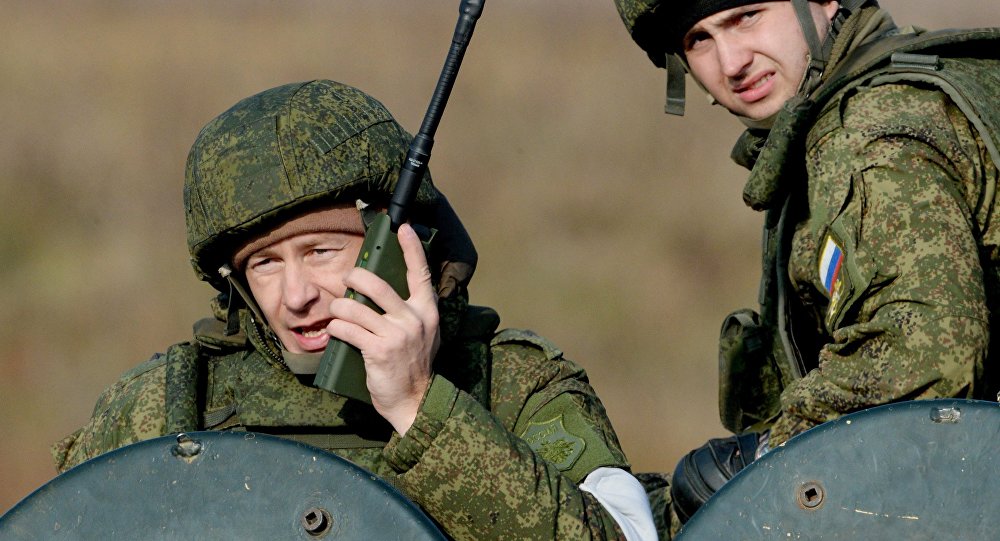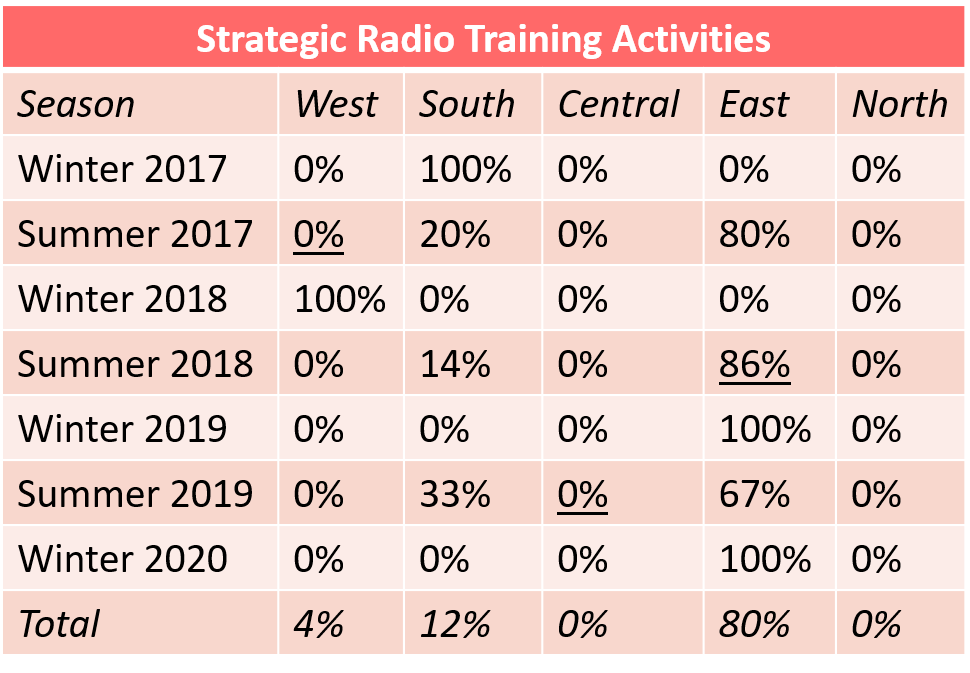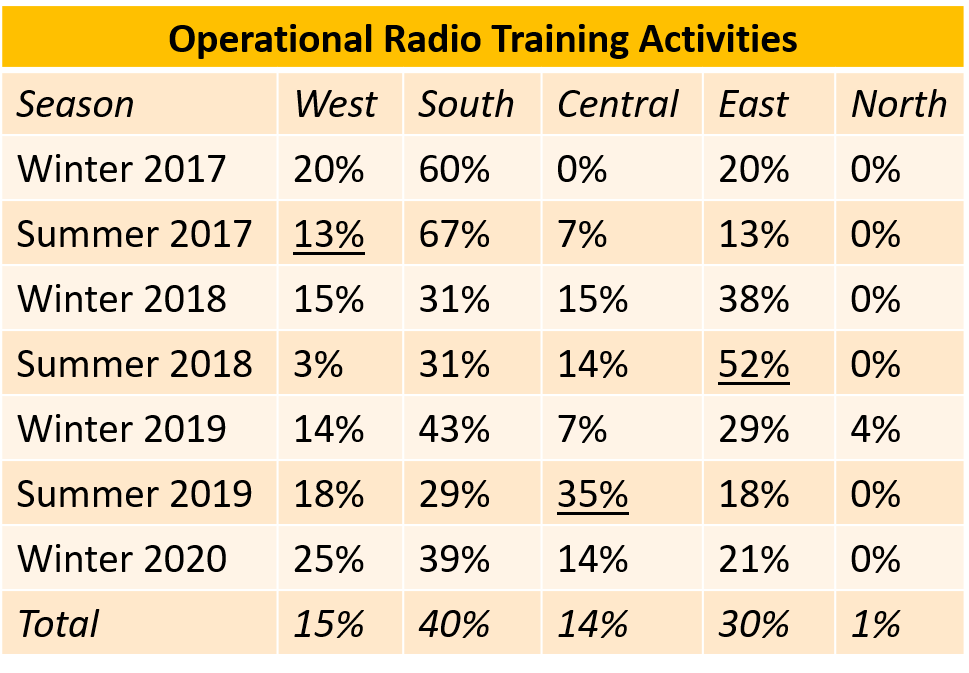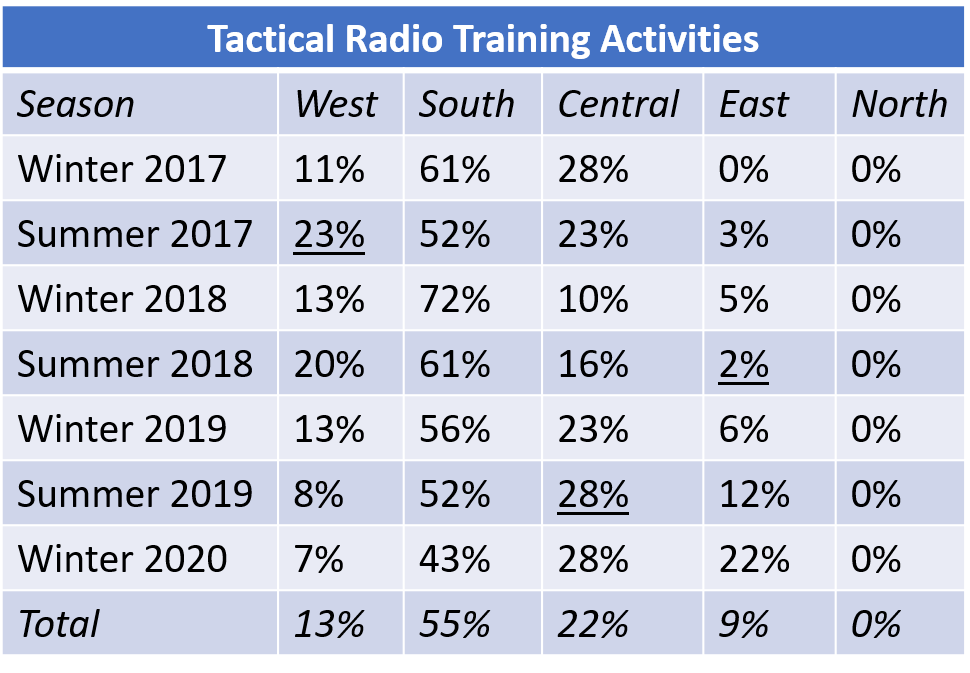
Radio Exercises and Trends in Russian C2 Capabilities
Radio Exercises and Trends in Russian C2 Capabilities
Despite the reported impact of COVID-19 on Russia’s military-industrial complex (Vedomosti, April 10), deliveries of new equipment continue (see EDM, March 25, April 1), including of modernized radios (Mil.ru, April 28) intended to improve the command-and-control (C2) capabilities of the Russian Armed Forces (see EDM, June 11, 2019). Identifying trends in Russian military modernization from the official press releases is tedious work given their typical lack of context. Nevertheless, by taking note of reported events over time, certain patterns do emerge from the data.
An examination of Russia’s reported radio exercises, broken down by military district (MD) and army/corps levels helps to highlight the scale on which different units are improving and exercising their C2 capabilities. Russia has five MDs, which can, in turn, be broken into 21 army- and corps-level areas of responsibility (see map at Warvspeace.org, accessed May 11).

Modern radios of the Russian Armed Forces can be divided into three categories: strategic, operational and tactical. Strategic radios are simplistically defined as those that cover a range of more than 1,000 kilometers (e.g., R-430, Liven, Baryer); operational radios cover a range of hundreds of kilometers (e.g., Redut, R-419L1, R-166); and tactical radios have a range of tens of kilometers (e.g., Artek, Strelets, Azart, R-149, Andromeda). This does not constitute a comprehensive list of all Russian military radios but rather those most frequently discussed in open-source press releases and that are relatively newly deployed.
Since the winter 2017 training season, the Russian Ministry of Defense has reported 463 training activities with some combination of these radios.



Though plenty of others likely occurred without reporting, this comprises a viable data set to analyze (Ministry of Defense press releases compiled at Warvspeace.org, accessed May 11). The figures suggest multiple interesting trends.
Strategic radio exercises remain relatively rare and are overwhelmingly concentrated in the Eastern Military District, especially the 29th and 36th armies. The Eastern MD covers an extremely large territory, but most units are concentrated on the Chinese and Mongolian borders, as a legacy of the Sino-Soviet split. Recent improvements in Sino-Russian relations mean that the likelihood of military operations in the Far East is quite low. The Central MD, in contrast, includes an even larger landmass, with fewer units; and yet, it has conducted no openly reported strategic-scale radio exercises since 2017. This suggests the Central MD is not training for long-range operations on its own (Warvspeace.org, accessed May 11).
Among Eastern MD formations, the 29th Army conducted the “Laros” exercise with Laos in December 2019 (Mil.ru, December 10, 2019), and the 36th Army regularly conducts the “Selenga” exercise with Mongolia each August or September (Mil.ru, August 7, 2019). The 5th Army regularly conducts the “Indra” exercise with India (Mil.ru, December 8, 2019). Whereas, the 35th Army has no regularly scheduled international exercise. This potentially suggests that the relatively small 29th and 36th Armies are increasingly training for expeditionary missions, at ranges of over 1,000 kilometers. Though India is farther away from Russia than Laos or Mongolia, Russia is significantly stronger than the latter two and would likely have to assume a senior position within any joint military operation. Such a scenario is highly unlikely between Russia and India; indeed, Indra is typically a peacekeeping exercise (Mil.ru, October 16, 2018). The main Chinese-Mongolian border crossing is almost 1,000 kilometers from the 36th Army headquarters, in Ulan-Ude.
Curiously, the only two armies to regularly exercise strategic-range radios are the 20th Guards Army on the Ukrainian border and the 49th Army on the mainland Black Sea coast. These armies’ locations potentially suggest building capabilities for long-range operations in Ukraine and the Middle East.
A majority of operational radio exercises occurred in the Southern and Eastern MDs. All army-level areas of responsibility regularly exercised these capabilities, but the corps-level ones did not. The 58th Army in the North Caucasus exercised operational-range radios the most often—by a significant margin. The 58th Army, headquartered in North Ossetia, not only ensures stability in the North Caucasus but also constitutes the main force for another war with Georgia or a military mission in Karabakh. The 49th Army and 8th Guards Army, both also in the Southern MD, hosted the second- and third-highest number of operational-scale radio exercises. In addition to potential Middle East deployment capability, the 49th Army would play a critical role on the Abkhaz front in another war with Georgia, while the 8th Guards Army is directly across the border from Ukrainian Donbas. In other military districts, only the 2nd Guards Army, in the Volga region, approached the number of these exercises. Among other tasks, the 2nd Guards Army trains as a peacekeeping force for Central Asia (Mil.ru, August 10, 2019) and as a second echelon for other military districts (Kommersant, November 12, 2017).
The top-level statistics for the tactical-range radios indicate a preponderance of activity in the Southern MD. This was most pronounced in the 49th Army, specifically at the 7th Military Base in Abkhazia, which exercised with short-range radios multiple times a month. The versatility of tactical-range radios in the Armed Forces makes it difficult to extrapolate how they might be used uniquely by region, but some other patterns do emerge. Whereas the strategic-operational exercises Vostok 2018 and Tsentr 2019 brought a majority and a plurality of operational-range radio exercises to their host districts, respectively, Zapad 2017 curiously did not; however, Zapad 2017 did feature a spike in the proportion of tactical-range radio exercises in the Western MD. This suggests that, while the latest Vostok and Tsentr maneuvers exercised operational-level C2, Zapad 2017 concentrated on the tactical level. Notably, none of these systems were exercised during the overt exercises themselves but rather occurred sporadically over course of the associated training season.
Also worth noting is that “hot spot” Russian regions hosted relatively few long-range radio exercises. Kaliningrad Oblast, the Arctic and the Kurile Islands saw no strategic-range exercises and only one operational-range one; Crimea saw no strategic- or operational-range exercises at all. Even among tactical-range radio exercises, Crimea had only seven, Kaliningrad Oblast three, and the Arctic and Kurile Islands zero. This would suggest that these region’s forces remain defensively oriented and may require external reinforcements to mount a counterattack.
If the wide divergence in these public figures accurately reflects the disposition of equipment in the Russian Armed Forces, it implies that either Russian military training remains highly regionally focused to address the disparate security challenges facing the country or that the radio modernization process remains incomplete. Nevertheless, the seeming specialization of the different regions may offer a clue as to how Moscow currently estimates the likely uses of its military forces in each strategic direction.


